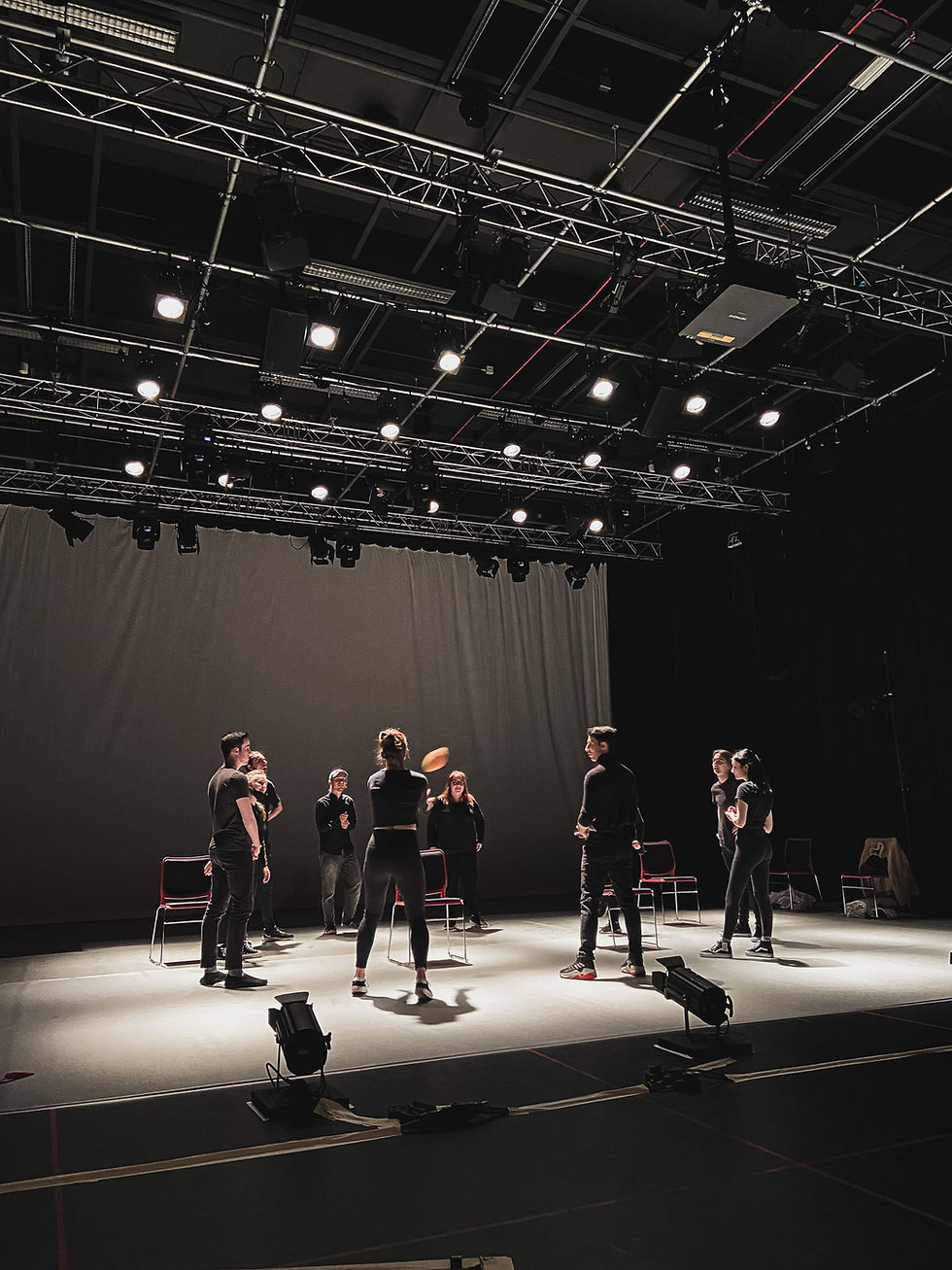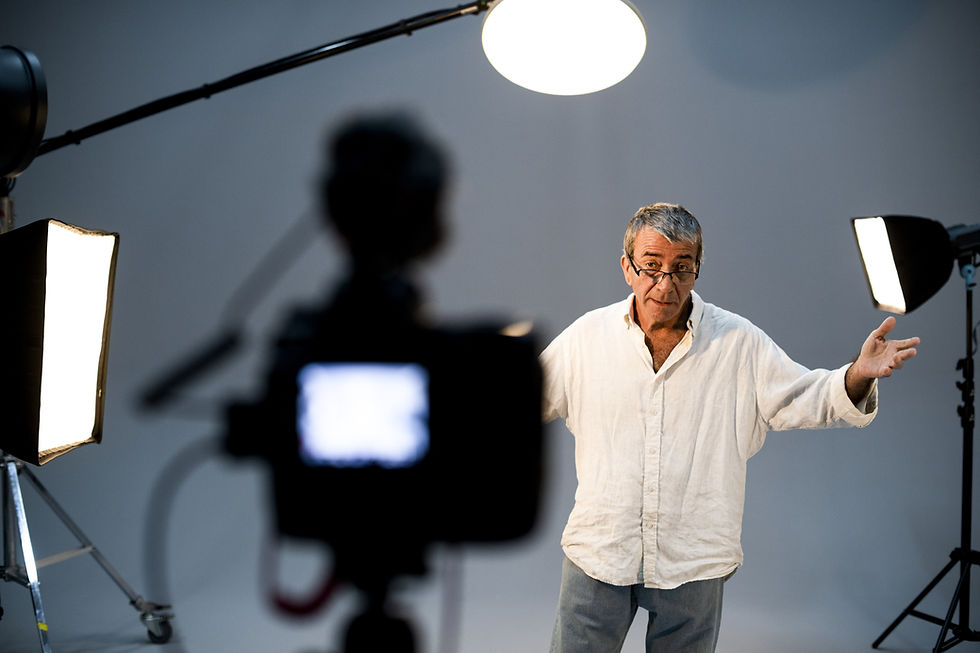Top Five Differences Between Stage and Screen Acting
- Neil Mulac

- Jun 18, 2024
- 4 min read

While both are rooted in the art of performance, the worlds of stage and screen acting are distinct realms with unique challenges and techniques. Understanding these differences is crucial for actors transitioning from one medium to another. Whether you're an aspiring actor or a seasoned professional, recognizing the nuances between stage and screen acting can enhance your versatility and skill. Here are the top five differences between stage and screen acting, complete with practical examples to illustrate each point.
Volume and Projection
Stage Acting: In theater, actors must project their voices to reach the audience, regardless of the size of the venue. This often requires exaggerated vocal techniques and strong, clear enunciation to ensure that the audience members hear every word, even those in the back rows. The physicality of stage acting is also more pronounced, with larger, more expressive gestures to convey emotions and actions clearly.
Example: Imagine performing in a large theater without a microphone. You have to project your voice so that someone sitting 50 feet away can hear you. This might mean using a more powerful, resonant voice and more significant hand gestures when expressing anger or joy to make your emotions visible from afar.
Screen Acting: In contrast, film and television rely on microphones and cameras to capture every nuance of the performance. Subtlety is essential, with actors using more restrained, naturalistic gestures and speech. The camera can capture a raised eyebrow or a whispered line, which would be lost on a stage.
Example: When filming a close-up scene, a slight smile or a single tear can be more impactful than a broad, theatrical gesture. Speaking in a normal, conversational tone is often more effective on screen, as the microphone will pick up the smallest inflections in your voice.
2. Physicality and Movement
Stage Acting: Stage actors must use their entire body to convey their characters. The need to be seen by a large audience means movements are often bigger and more exaggerated. Blocking (the precise staging of actors) is crucial, as it dictates where actors move and stand, ensuring they are always visible and engaged with the audience.
Example: In a stage fight scene, movements must be exaggerated and carefully choreographed to ensure safety and visibility. A punch might be swung wide, with a loud stomp on the floor to simulate the impact sound.
Screen Acting: For screen actors, the camera captures details that would be missed on stage. Movements are more subtle and often more minor. Blocking for the camera involves knowing how to position oneself within the frame and maintain continuity between shots.
Example: In a film fight scene, the choreography is designed to look realistic and can include quick, sharp movements that wouldn't be seen from a distance. The actors rely on the camera angles and editing to convey impact and intensity.
3. Audience Interaction
Stage Acting: The presence of a live audience is a defining characteristic of theater. This creates a dynamic, interactive atmosphere where actors feed off the audience's energy. Immediate feedback, such as laughter or applause, can influence an actor's performance, creating a unique experience for each show.
Example: During a comedic play, an actor might pause longer for laughs if the audience is particularly responsive. This live interaction can also mean adjusting performance elements in real time to match the audience's energy.
Screen Acting: Film and television actors perform without the immediate feedback of an audience. The performance is crafted for the camera and is often filmed out of sequence. Actors must rely on the director's vision and the script to guide their performance without the instant validation that comes from a live audience.
Example: A film actor delivering a humorous line must trust their delivery and the director's feedback rather than wait for laughter. The final audience reaction will only be known once the film is released.
4. Rehearsal and Preparation
Stage Acting: Theater productions typically involve extensive rehearsals over several weeks or months. This process allows actors to develop their characters deeply, refine their interactions, and perfect their timing. The continuity of performing a play from beginning to end helps actors build and maintain their characters' emotional journeys.
Example: A Shakespearean actor might spend weeks rehearsing the cadence and rhythm of iambic pentameter, developing an understanding of their character's motivations and relationships with other characters, ensuring a seamless, powerful performance on stage.
Screen Acting: On-camera acting involves a different approach to preparation. Rehearsals are often shorter and more focused on specific scenes than the entire script. Due to the shooting schedule, actors need to be adaptable and ready to perform scenes out of order. They often must quickly get into character and convey the required emotions on demand.
Example: A film actor might have a few days to prepare for a crucial emotional scene. They must rely on personal techniques to access the required emotions quickly, ensuring consistency across multiple takes.
5. Technical Aspects
Stage Acting: Theater productions rely on live technical elements such as lighting, sound effects, and stage design, which are controlled in real-time. Actors must be aware of these elements, hit their marks precisely, and adapt to any technical issues during a performance.
Example: During a live performance, an actor must be conscious of staying within the spotlight and delivering lines at the right moment to sync with sound effects or music cues, requiring a keen awareness of the live technical environment.
Screen Acting: Screen acting requires working closely with various technical aspects, including camera angles, lighting, and editing. Actors must be conscious of their placement within the frame, continuity between takes, and the impact of close-ups and wide shots on their performance.
Example: In a movie, an actor must maintain continuity by repeating the same actions and expressions across multiple takes. They must also be aware of the camera's position, adjusting their performance to ensure they remain focused and properly lit.
While stage and screen acting share the same foundational skills, the execution of these skills differs significantly between the two mediums. Understanding these differences can help actors transition smoothly from stage to screen or vice versa, enhancing their versatility and performance quality. By mastering the unique demands of each medium, actors can broaden their opportunities and deepen their appreciation for the craft of acting.
Whether in the spotlight on stage or in front of the camera, embracing these distinctions will enrich your acting experience and performance, allowing you to captivate audiences in any setting.







Comments